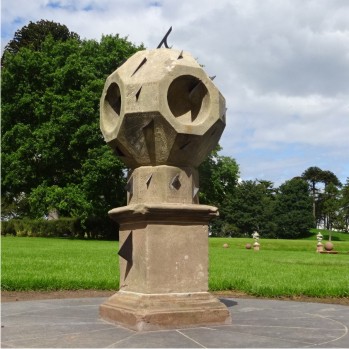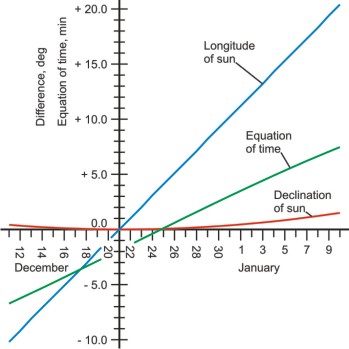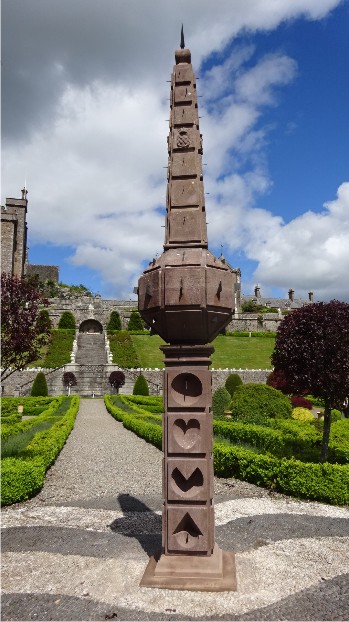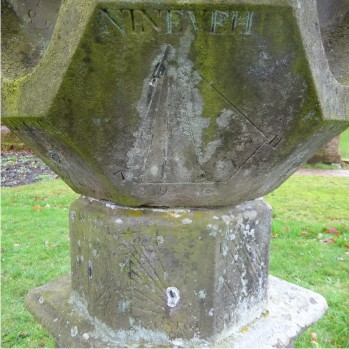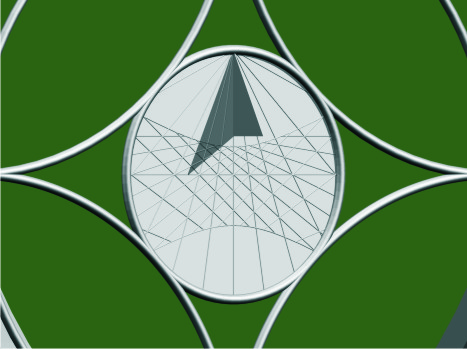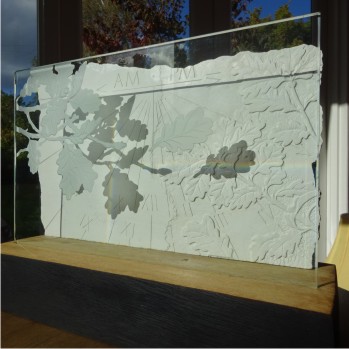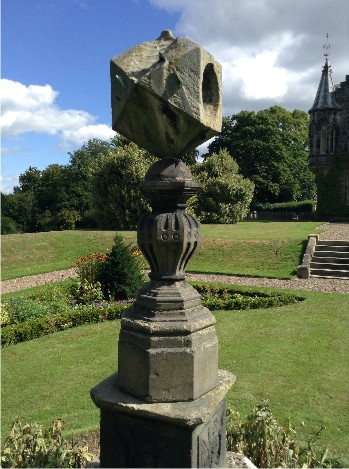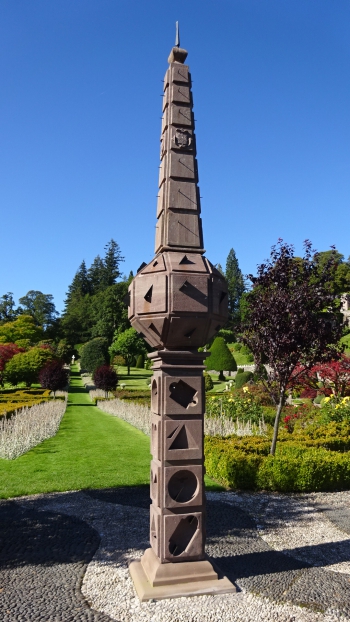
The sundial consists of 61 multiple dials on raised panels and in sunken hollows. The date of the sundial is 1630. It has been made as an exhibition piece to show all of the sundial mathematics of its era.
The sundial obelisk at Drummond Castle in Perthshire has a long and distinguished history. It has its place in the architecture of the ancient castles and houses in Scotland. It is connected with the very earliest days of the British Sundial Society (BSS). And it is one of the most important free-standing sundials in the British Isles from the early 1600s still surviving.
In 2017 after almost four hundred years outdoors the sundial was showing serious signs of the stone deteriorating. The whole structure was feared to be unsound. Making it safe had become urgent. Continue reading

 It is lovely when a new sundial and a new design of garden full of flowers go hand in hand. Very often a sundial finds itself a little out of place standing on its own, but look what happens when it fits into a whole design and planting scheme of a colourful garden.
It is lovely when a new sundial and a new design of garden full of flowers go hand in hand. Very often a sundial finds itself a little out of place standing on its own, but look what happens when it fits into a whole design and planting scheme of a colourful garden. 